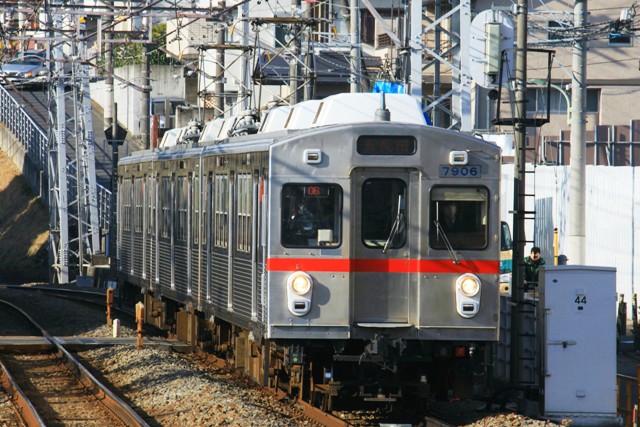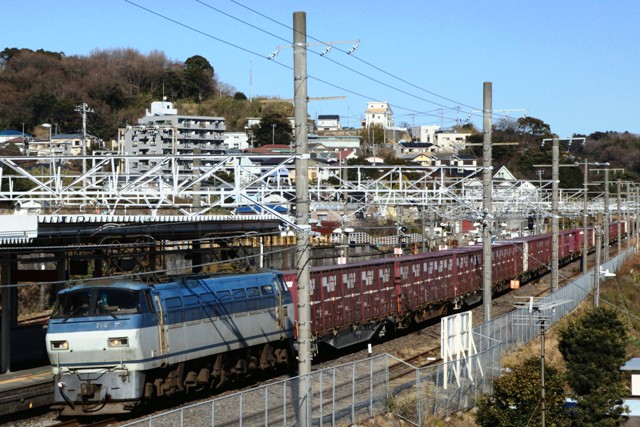As I posted before, Tokyu Corporation celebrated the 90th anniversary of their Ikegami line last October. In commemoration of the 90th anniversary, I am going to introduce the variation of the Ikegami line trains today. Although the Ikegami line is a short and local route, four kinds of trains are operated on the line. They are the EMU 1000, 1000-1500, 7000 and 7700 series.
The latest model is the 7000 series. It was commissioned in 2007 to replace old models on the Ikegami and the Tamagawa lines. A total of 9 sets, 27 units, were built by Tokyu Sharyo and J-TREC. The outer design of the 7000 series is smart as a train of the fashionable urban residential areas. The green colored body is totally new since most of the Tokyu trains have red stripes on the stainless steel bodies. The interior of the 7000 series is also attractive. Specifically, the heavily used wood-grain walls offer the passengers peace and comfort.
The oldest model is the 7700 series originally launched in 1962 under the name of the 7000 series. A total of 134 units were built by Tokyu Sharyo. After being operated on the Toyoko and the Denentoshi lines, it was modified in 1987 to become the 7700 series. New electric systems such as variable frequency drive with induction motors and new bogies were equipped on the 7700 series. The interior was renovated and air conditioners were also equipped. A total of 6 sets, 18 units are still operated.
The latest model is the 7000 series. It was commissioned in 2007 to replace old models on the Ikegami and the Tamagawa lines. A total of 9 sets, 27 units, were built by Tokyu Sharyo and J-TREC. The outer design of the 7000 series is smart as a train of the fashionable urban residential areas. The green colored body is totally new since most of the Tokyu trains have red stripes on the stainless steel bodies. The interior of the 7000 series is also attractive. Specifically, the heavily used wood-grain walls offer the passengers peace and comfort.
The oldest model is the 7700 series originally launched in 1962 under the name of the 7000 series. A total of 134 units were built by Tokyu Sharyo. After being operated on the Toyoko and the Denentoshi lines, it was modified in 1987 to become the 7700 series. New electric systems such as variable frequency drive with induction motors and new bogies were equipped on the 7700 series. The interior was renovated and air conditioners were also equipped. A total of 6 sets, 18 units are still operated.
Official information about the trains on the Tokyu lines (in Japanese):

















